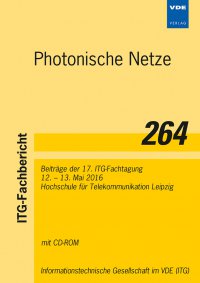Virtualization in high-throughput network elements and its impact on energy consumption
Konferenz: Photonische Netze - 17. ITG-Fachtagung
12.05.2016 - 13.05.2016 in Leipzig, Deutschland
Tagungsband: Photonische Netze
Seiten: 6Sprache: EnglischTyp: PDF
Persönliche VDE-Mitglieder erhalten auf diesen Artikel 10% Rabatt
Autoren:
Woesner, Hagen (BISDN GmbH, Christburger Str. 45, 10405 Berlin, Gerany)
Lange, Christoph; Kosiankowski, Dirk (Deutsche Telekom AG, Telekom Innovation Laboratories, Winterfeldtstr. 21, 10781 Berlin, Germany)
Schlenk, Ralph (Alcatel-Lucent Deutschland AG, Thurn-und-Taxis-Str. 10, 90411 Nürnberg, Germany)
Schlosser, Michael (Fraunhofer Heinrich Hertz Institut, Einsteinufer 37, 10587 Berlin & BISDN GmbH, Christburger Straße 45, 10405 Berlin, Germany)
Inhalt:
Network Function Virtualization (NFV) describes the recent trend towards the concentration of traditional telecommunication network functions in data centers on commodity hardware. Solutions are available for vCPEs, firewalls, mobile core elements, while high-throughput network elements like routers or transport network boxes are still considered outside of the data center. High data throughput is achieved, when necessary, by means of load balancers and massive parallelization. This parallelization, although it exploits the “cookie cutting” feature of virtual machine (VM) provisioning via modern cloud provisioning tools is scalable and manageable, but naturally leads to a higher total energy consumption. This paper investigates the energy consumption of a sample application: the Broadband Network Gateway (BNG). This is being compared in a bare-metal implementation using Intel DPDK, a standard cloud network stack implementation and an I/O-optimized version. The resulting throughput and energy consumption figures contributes to the overall equation that characterizes the cost of network function virtualization. One part of the measurement results is the maximum achievable throughput on a standard server. In order to achieve higher throughput, the separation of control and data plane as advertised by SDN needs to be applied to high-throughput network elements as well. This is showcased by an example of a virtualized element controller (vEC) for an optical transport network element.


